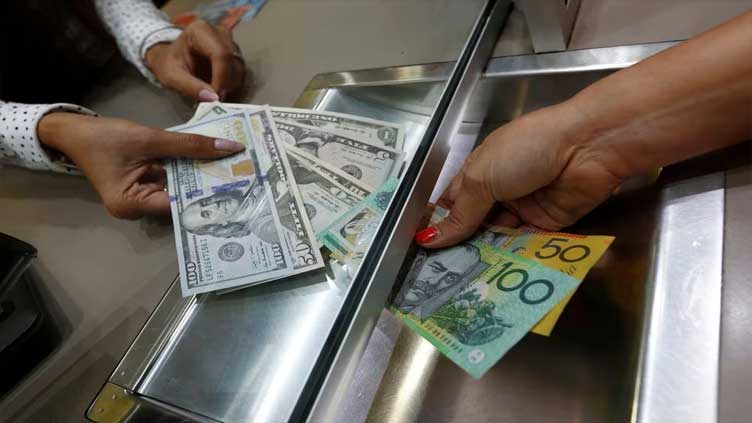Dollar steady ahead of key job data; yuan weathers China outlook cut

Business
Dollar steady ahead of key job data; yuan weathers China outlook cut
LONDON (Reuters) - The US dollar stood near a one-week high against a basket of currencies on Tuesday, ahead of a flurry of employment data that could upend investor expectations for the interest rate outlook.
The yuan held steady in the face of a downgrade to the outlook for China's credit rating from Moody's, as major state-owned banks stepped in to stem any slide by selling dollars.
The euro took a modest early knock from comments by European Central Bank member Isabel Schnabel, who said in an interview with Reuters that interest rate hikes were off the table, given the recent "remarkable" fall in inflation.
Bitcoin held close to its highest since April last year, near $42,000, as a decline in the dollar in recent weeks has diverted cash into riskier assets.
Investors are keenly awaiting Friday's US non-farm payrolls report for November. But before then, the monthly JOLTS report - which captures monthly hirings and firings - lands on Tuesday and the private-sector ADP survey is due on Wednesday.
Both could shape expectations for Friday's number and make for volatile trading in the run-up, given the power of monetary policy expectations to drive currencies right now.
"The market's main focus now is still very much on what central banks are going to do next year in terms of policy. We've had this very dramatic dovish repricing of rate expectations for both the Fed and the ECB over the past week, so that's certainly having an impact on FX markets," MUFG currency strategist Lee Hardman said.
The dollar index was up 0.15%, around one-week highs.
Analysts said the dollar's nudge up was in part due to a reversal of the heavy selloff in recent weeks that stripped 3% off the dollar index in November alone, its steepest monthly decline in a year.
CUTS PRICED IN
Traders have priced in at least 125 basis points worth of rate cuts from the Federal Reserve next year, with a good chance of 50 bps by June, according to CME's FedWatch tool.
"The Fed will be reactive to the hard data and not anticipatory of it," said Thierry Wizman, Macquarie's global foreign exchange and interest rates strategist. "So as long as the activity data deteriorates and inflation retreats, convergence toward lower yields will resume."
By comparison, futures show there is an 82% chance the ECB could deliver its first rate cut by next March. Inflation across the eurozone has fallen more quickly than most anticipated, as evidenced by last Thursday's consumer price data.
The euro has lost 1.34% since then and the data was enough to persuade ECB board member Schnabel to change her stance on rate cuts. A month ago, she had insisted hikes must remain an option.
The euro was last down 0.1% at $1.082 and down 0.1% against the pound at 85.72 pence.
The yuan held steady after Moody's decision to cut China's credit outlook to "negative" on Tuesday, thanks in part to state-owned banks that were seen swapping yuan for US dollars in the onshore swap market and selling those dollars in the spot market, two sources with knowledge of the matter said.
The offshore yuan was broadly steady at 7.154 per dollar, having traded at 7.16 earlier.
Sterling was little changed at $1.2624, while the yen was steady, leaving the dollar at 147.11.
The Australian dollar fell 0.9% to $0.6558, below Monday's four-month high, after the Reserve Bank of Australia (RBA) kept rates at a 12-year high of 4.35% on Tuesday, as widely expected, and noted that economic data received since November had been broadly in line with forecasts.
In cryptocurrencies, bitcoin was down 0.5% at $41,777, narrowly below Monday's peak of $42,404, its highest since April 2022.
The world's largest cryptocurrency has gained 150% this year, fuelled in part by optimism that US regulators will soon approve exchange-traded spot bitcoin funds (ETFs), which could open the bitcoin market to millions more investors.
"$40,000 has acted like a magnet since bitcoin finally broke through $30,000 in late October," said crypto-services firm Nexo co-founder Antoni Trenchev. "It was only a matter of time before the next round number succumbed as enthusiasm about a spot ETF reaches fever pitch."



